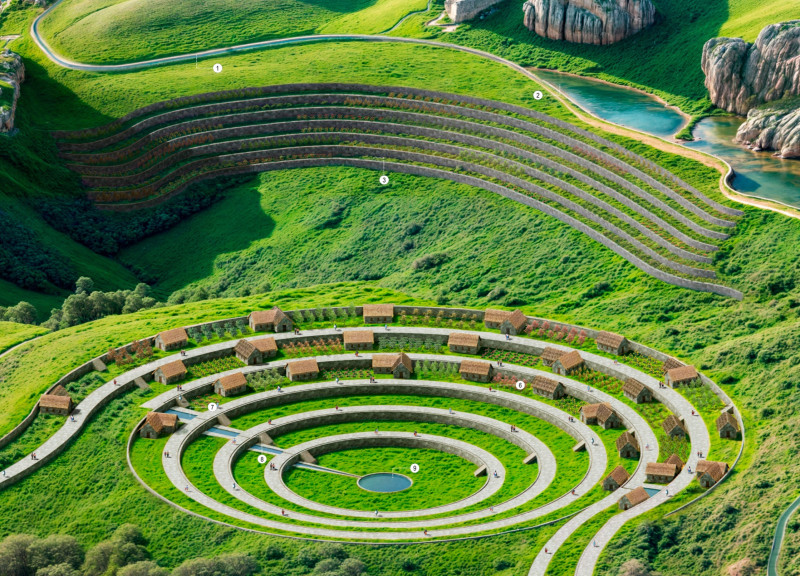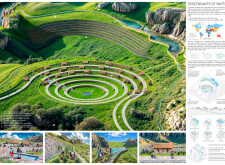5 key facts about this project
### Overview
"Descendants of Water" is situated in the highland valleys of Peru and aims to address the critical issue of water scarcity through a thoughtfully conceived settlement design tailored to the region's geographic and climatic conditions. The project focuses on establishing sustainable living environments that engage local communities and promote water conservation alongside agricultural practices.
### Layout and Spatial Organization
The design features a series of concentric terraces, which facilitate both agricultural space and effective water management by capturing rainwater and surface runoff. The central water body functions as a reservoir and community focal point, underscoring the cultural significance of water. Residential structures are interspersed within these terraces, constructed from local materials to ensure compatibility with the landscape. The project also incorporates a network of pathways that enhance connectivity among residential and communal spaces while minimizing ecological disruption.
### Materiality and Sustainability
The material choices are integral to the project's sustainability objectives, utilizing local stone for durability, earth and clay for thermoregulation and rainwater collection, and sustainably sourced wood in structural elements. Permeable paving is implemented in pathways to enhance water infiltration and reduce surface runoff. Sustainable practices are embedded in the design, including rainwater harvesting systems, support for local agriculture, ecological preservation through landscape integration, and community engagement initiatives aimed at promoting social interaction and shared responsibilities around water and food management.



















































